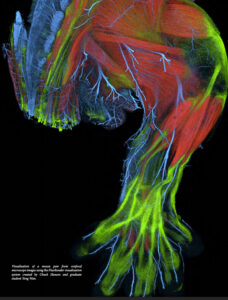Scientific Computing and Imaging (SCI) Institute celebrates 30 years of supporting research at the U
 It started with an audacious idea. Create a realistic computer model to study the electrical current flow in the human thorax emanating from the heart’s electrical activity. Three decades later, the Scientific Computing and Imaging (or SCI) Institute is considered a world leader in visualization and high-performance computing research whose presence has helped propel the University of Utah’s rise as a premier research institution.
It started with an audacious idea. Create a realistic computer model to study the electrical current flow in the human thorax emanating from the heart’s electrical activity. Three decades later, the Scientific Computing and Imaging (or SCI) Institute is considered a world leader in visualization and high-performance computing research whose presence has helped propel the University of Utah’s rise as a premier research institution.
The SCI Institute celebrated its 30th anniversary on April 24-25 with several public presentations, keynotes and panels at the Warnock Engineering Building and the U Alumni House.
The seeds for what became SCI (pronounced like the sport Utah is famous for) were planted by a couple of shaggy-haired junior faculty members with a common passion for cycling and an exquisite eye for thinking outside the boxes that can constrain academic inquiry.
Rob MacLeod and Chris Johnson were both working with the Cardiovascular Research and Training Institute, known as CVRTI, in the early 1990s when they began knocking on campus doors in search of computer equipment and expertise to help make sense of cardiac electrophysiology data their team was handling.
“We were kind of this weird little island among all these traditional experimental scientists and clinicians who were treating this problem in the ways appropriate for the time,” MacLeod recalled, “but they could not really imagine why a computer would be useful for them.”
The young researchers needed to run simulations but did not have the necessary equipment.
“So we marched down to the computer center, which was in the basement of the Park Building back at that time, and said, ‘We want to use your computers,’” MacLeod continued. “And they looked at us sort of down their noses and said, ‘So who are you? What is it you want to do with these computers?’”
With support hard to come by, they had to improvise and, more importantly, network with people outside their department. They found the help they needed in the mathematics and computer science departments and thus began a string of collaborations that led to the establishment in 1994 of the federally funded research group that evolved into the SCI Institute.
Continue reading Brian Maffly’s “Moving science forward by imaging data” on @theU.